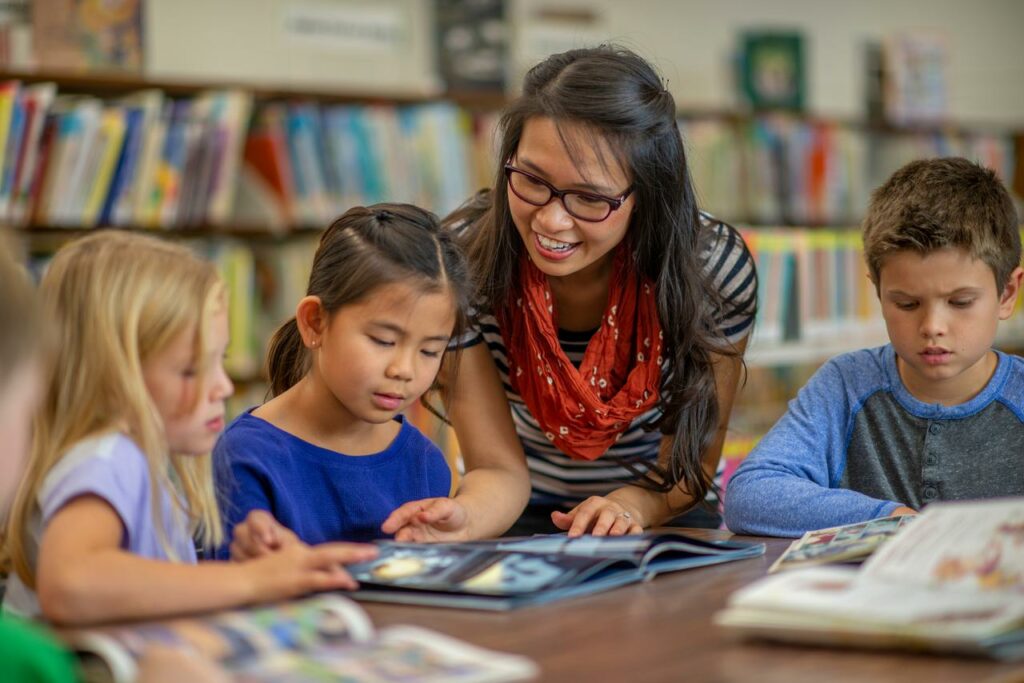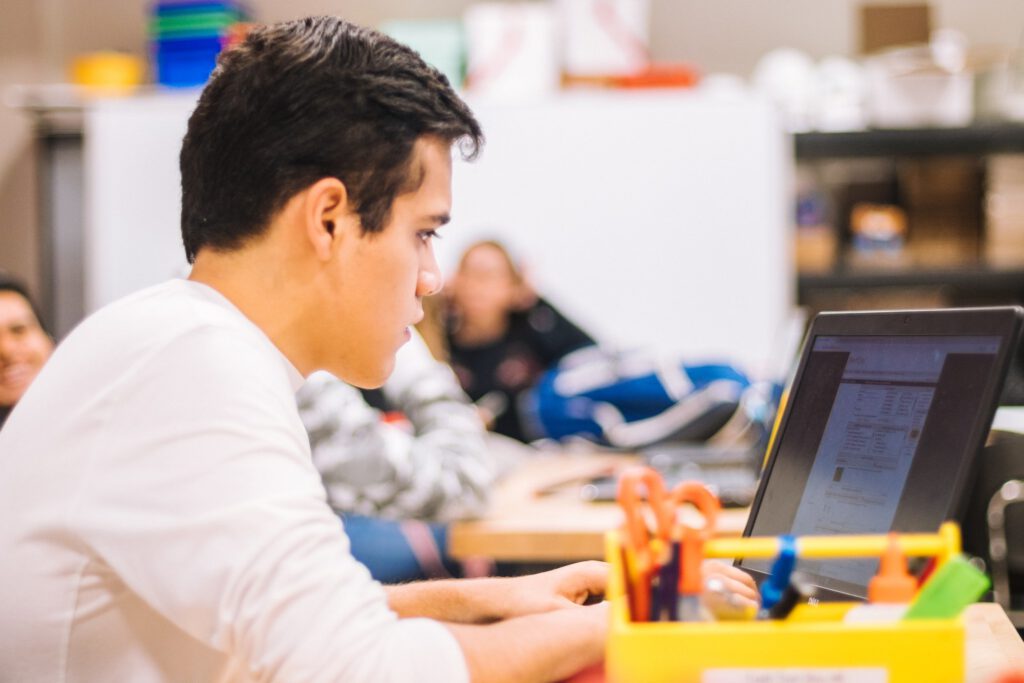Differentiation In Hybrid Learning So That All Students Succeed
In the 21st Century classroom, student diversity is evident. Students bring with them varied backgrounds, cultures, interests, and readiness levels. As our classroom diversities increase, so does our need to ensure all students have access to the best educational experience. Education is not a “one size fits all” approach. Students bring with them different skill sets, languages, strengths, and areas for growth. It is our responsibility as educators to ensure that every student can be successful in our classrooms. Differentiation helps to address all of the wonderful differences to make learning accessible to all students. Addressing learning differences and interests increases student motivation and success, while ignoring these differences contributes to learning gaps. All students are capable of learning, especially when teachers leverage the right tools and strategies through differentiated instruction
“Addressing learning differences and interests increases student motivation and success, while ignoring these differences contributes to learning gaps. All students are capable of learning, especially when teachers leverage the right tools and strategies through differentiated instruction.”
Differentiation can be defined as an instructional approach that allows teachers to meet students’ unique learning needs (Williams, 2020). Most often, we think of differentiation as simply adjusting the content, but there are several other ways to adjust instruction. Below are three aspects of differentiation instruction and possible strategies to implement in the classroom (Alvarez, 2018).
-
Content – Differentiating content refers to adjusting what students are learning to best meet their needs. Consider the readiness levels of students as you begin new content. Where do they compare to the readiness of their peers? Does the content need to be modified (above or below grade level) to meet their readiness?
-
Process – Differentiating the process refers to how students learn. Allow students a variety of methods in which they can access the information and consider different types of learners (visual, auditory, kinesthetic). Classroom setup is important here as well. Are students learning through whole group instruction or small group? Is there a supporting teacher who can provide instruction in a different setting for students who might benefit?
-
Product – Differentiating the product refers to how students demonstrate mastery of the material. If the focus is on the content they’ve learned, teachers can adjust the methods in which students demonstrate their understanding. Students who love to write can have this option whereas students who are more artistic can show their understanding through a visual option such as drawing or designing a digital presentation.
With proper training and strategic implementation, teachers can successfully employ strategies to help accommodate different learning needs. With the nearly overnight switch to online and hybrid learning for many schools, differentiation has become an even greater challenge. To many, differentiation looks far different than the skills teachers may have utilized when in-person with students. As teachers take on added challenges of navigating online learning while varying their instruction to meet students’ needs, it’s important to consider what these strategies might look like in a hybrid environment. How can we ensure our instruction is varied for all students while climbing the mountain that is hybrid learning?
In her article with the Center for Student Achievement Solutions, Chandra Williams references Colorín Colorado to outline three factors teachers should consider when planning for differentiated instruction in the hybrid classroom:
-
Readiness — Do students have prior knowledge needed to learn new concepts in this unit?
-
Interest — What causes students to feel motivated to learn?
-
Learning Profile — How do students learn best and approach the task of learning?
Collecting this information is vital for teachers to use in order to plan for strategic groups, offer student choice, and present content in multiple ways (Davila, 2020)
The good news is that many of the same strategies used during in-person instruction for differentiation can also be utilized online, though they may require different tools and resources. While there may be added challenges concerning technology use, student engagement, and focus while learning online, teachers can still work to ensure differentiation strategies are implemented in a successful way. Building relationships, introducing new tools and platforms to students, and easing anxieties over learning in a hybrid environment can help ease some of the worries. Below are a few concrete strategies teachers might consider when differentiating in hybrid learning environments.
Targeting Instruction Through Student Groups
Just as a teacher might use small group instruction in the physical classroom to appropriately differentiate, small groups through tools such as breakout rooms are a great way to strategically group students in the virtual classroom. They allow teachers to deliver quality instruction in a way that is best suited for each student’s level or learning style. Teachers can easily group students homogeneously or heterogeneously for small groups, collaboration on projects, etc. Doing so can allow the teacher to work in smaller groups with those who require more individualized instruction while also meeting other students at their levels. Peer tutoring and extension activities can easily be implemented with strategic student groupings as well.
Offering Opportunities for Choice
Studies show that implementing student choice in the classroom makes students “active participants in their educations, thereby increasing levels of engagement” (Pandolpho, Edutopia, 2018). By providing students with choices in the classroom to demonstrate their understanding, teachers can create autonomy and student buy-in with activities. Some ideas for implementing students choice as a way of differentiating instruction include:
-
Choice of Process – Allow students to choose how they work with Choice Boards or Offline Choice Boards.
-
Choice of Product – Let students write a blog, create artwork, or even design a Google Slides presentation.
-
Student-Driven Groups – Allow students to choose with whom to work and mix up group sizes.
-
Choice of Level – Scale and scaffold difficulty levels for students of all levels in the classroom.
-
Targeted Support – Target assignments for individual skill gaps.
-
Informational Formats – Include multiple formats for engaging with content (audiovisual, hands-on, etc.)
Presenting the Same Content in Multiple Ways
One thing that is important to consider is how your students prefer to engage in content while learning online. More than likely, these preferences will vary. Consider that some students might engage best by direct teaching from the instructor using slides, while others are more likely to absorb information through interactive graphics and games. Some students will benefit from watching videos that offer captions or be allowed to write using a speech-to-text tool. In order to successfully differentiate for all learning styles, teachers must be prepared to vary their delivery methods in the hybrid classroom.
Ensuring Teacher Readiness
Ultimately, the best thing that can be provided for effective differentiation in a hybrid or online classroom is adequate professional development for teachers. All of these strategies are wonderful to implement but will not be successful unless teachers feel well-prepared to utilize them in an online environment. Administrators can help ensure their teachers are well-prepared by providing training on tools and platforms the school has decided to use. Administrators can also provide support for teachers who experience challenges. Additionally, Moreland University provides no-cost online professional development in our collaborative and task-based model each month in alignment with our mission: “Teaching teachers around the world to be resourceful problem solvers and tech-savvy educators through an online, collaborative, activity-based learning system designed for tomorrow’s students in a dynamic and diverse world.”
Ashley Lambert, M.Ed.
Instructor, Moreland University



